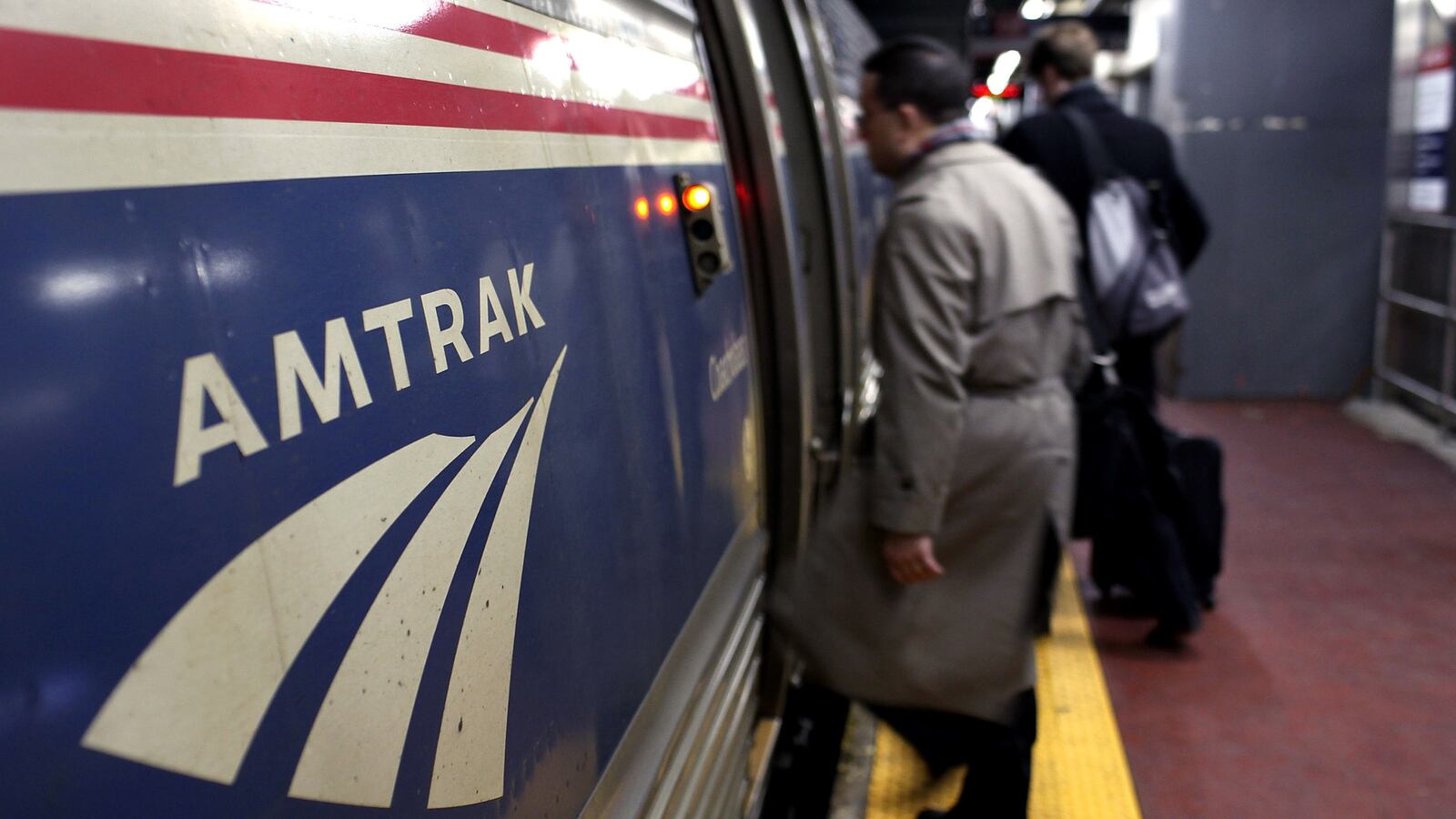“We’ll take you across the mighty Mississippi through eight states—past wheat fields and ranches, missions and pueblos, mountains and deserts,” reads the promotional copy for Amtrak’s Southwest Chief, a sleeper train that weaves 2,256 miles from Los Angeles to Chicago along portions of the old Sante Fe trail. “You’ll see spectacular landscapes and pristine vistas not visible from interstate highways.” While gazing out at scenery worthy of the best John Ford flicks, riders can chow down on offerings from Amtrak’s full-service kitchen, such as the angus steak burger for $9.75, a $16 Vegetarian Gemelli Pasta, or the wild caught Mahi-Mahi for $23.25.

This “journey of elevations,” as Amtrak describes it, may be a bliss-out for passengers, but should taxpayers be forced to underwrite the ride? In 2011, the Southwest Chief ran a $66.5 million deficit, meaning the federal government had to kick in $185 for every passenger on board. And to keep the Southwest Chief running, Amtrak is now seeking additional state aid of $120 million over the next decade.
As any popcorn-stand profiteer posing as a movie house operator can attest, captive eaters create golden opportunities to supersize profits. But on the Southwest Chief—and Amtrak trains in general—food and beverages are a financial drain. Last week, the inspector general revealed at a congressional hearing that Amtrak lost $609 million on its meal services over the past six years, citing all kinds of eye-popping details about giveaways to staff, spoiled food, and service workers earning about four times the standard industry wage. Defenders of Amtrak argue that the report was just a headline-grabbing jab that distracts from the larger story of the organization’s resurgence.
But the food service fiasco is just the tip of the iceberg. Amtrak has a chaotic management culture, routinely misappropriates funding, and is hamstrung by insane union work rules, as has been described in great detail by its former president, David Gunn.
Amtrak’s been running red ink since its founding in 1971, and tales of its financial imprudence are nothing new. But the 2008 law that authorizes it to operate is set to expire, so Congress is once again mulling what to do with this rolling money-gusher. The Brookings Institution has come out with a major study claiming that in the last five years Amtrak has finally gotten on the right track. The study, titled “A New Alignment: Strengthening America’s Commitment to Passenger Rail,” characterizes the 2008 legislation as a success that should be tweaked and renewed.
By glossing over facts, the Brookings report obscures the real story. In the last five years, Amtrak has grown increasingly reliant on public subsidies at all levels of government. Between 2007 and 2011, it received a record $8.4 billion in federal funding—a 50 percent increase over the prior five-year period. States have now become major contributors to Amtrak’s bottom line, kicking in an additional $842 million over the same timeframe. Amtrak’s ridership gains in the past few years are a nearly undetectable blip when placed in the context of the larger U.S. transportation network.
Amtrak supporters will be quick to point out that $8.4 billion over five years isn’t a big-ticket budget item in the context of the federal budget—maybe about what the Pentagon spends on copy room supplies. But compared to other modes of transit that partially cover their costs with gas taxes and user fees, Amtrak’s subsidies are off the charts, according to Bob Poole, director of transportation policy at the Reason Foundation. Poole cites a 2004 federal study showing that Amtrak received subsidies of $186 per thousand passenger miles, as compared to airlines, which got $6, and highways, which generated excess revenue.
The Brookings report labels long-distance boondoggles like the Southwest Chief the “geographical equity portion” of Amtrak’s network, and lays out a case for even more support from states to sop up their immense losses. The concept of “equity” implies that rail is some sort of public good, like clean water and education, when it’s actually just one of many competing ways of getting from one place to another. Spreading rail services out among sparsely populated states may help win Amtrak support in Congress, but is that what’s best for the riding public?
If these services were to disappear tomorrow, it would have almost zero effect on the U.S. transit network, as Cato Institute Senior Fellow Randal O’Toole argues in a recent paper. The average American logs about 15,000 miles per year by car, 1,800 miles by plane, and only 20 miles on an Amtrak train of any sort. Amtrak accounts for about 0.36 percent of total intercity passenger travel in the U.S. For the small number of people too scared to board an airplane and incapable of driving, the rapidly growing intercity bus industry offers a cheaper, unsubsidized, and more environmentally friendly alternative.
So what about the Northeast Corridor (NEC), which is the busiest section of rail in the U.S.? Contrary to Brookings’ assertions, the NEC is also a giant money pit. The study claims the NEC generated a $205.4 million operating balance in 2011, but that figure was arrived at using Amtrak’s own selective bean counting methods. In violation of generally accepted accounting practices, routine maintenance expenses are counted as capital expenditures, according to O’Toole, while real capital expenditures never appear on Amtrak’s books because the federal government picks up the tab. According to calculations arrived at by Andrew Selden, an attorney and vice present of the United Rail Passenger Alliance, the federal government has poured roughly $40 billion into capital projects for the NEC since 1975. Now Amtrak says it needs another $151 billion to bring high-speed rail to the corridor by 2040.
The Brookings report also touts exceptional ridership growth on the Northeast Corridor, but this is also a statistical slight of hand. As O’Toole points out, the study uses 1997 as a baseline, which was a low point for Amtrak’s ridership. If the authors had used 1991 instead, which was Amtrak’s peak prior to 2010, passenger growth results would look far more modest.
The government dole has so poisoned Amtrak’s management culture that lawmakers should move to dissolve the organization, even if it must continue subsidizing passenger rail in other ways. On the Northeast Corridor, Congress should take a page from the Brits and seek out a public-private partnership. This would involve transferring ownership of the NEC to a new public entity charged with caring for the tracks and signals. Then competing private carriers could bid for contracts to operate along Amtrak’s old routes, which would lead to lower prices and better service.
The Southwest Chief, on the other hand, should go chugging off into the sunset, maybe with a Tex Ritter ballad playing softly under the credit roll.





